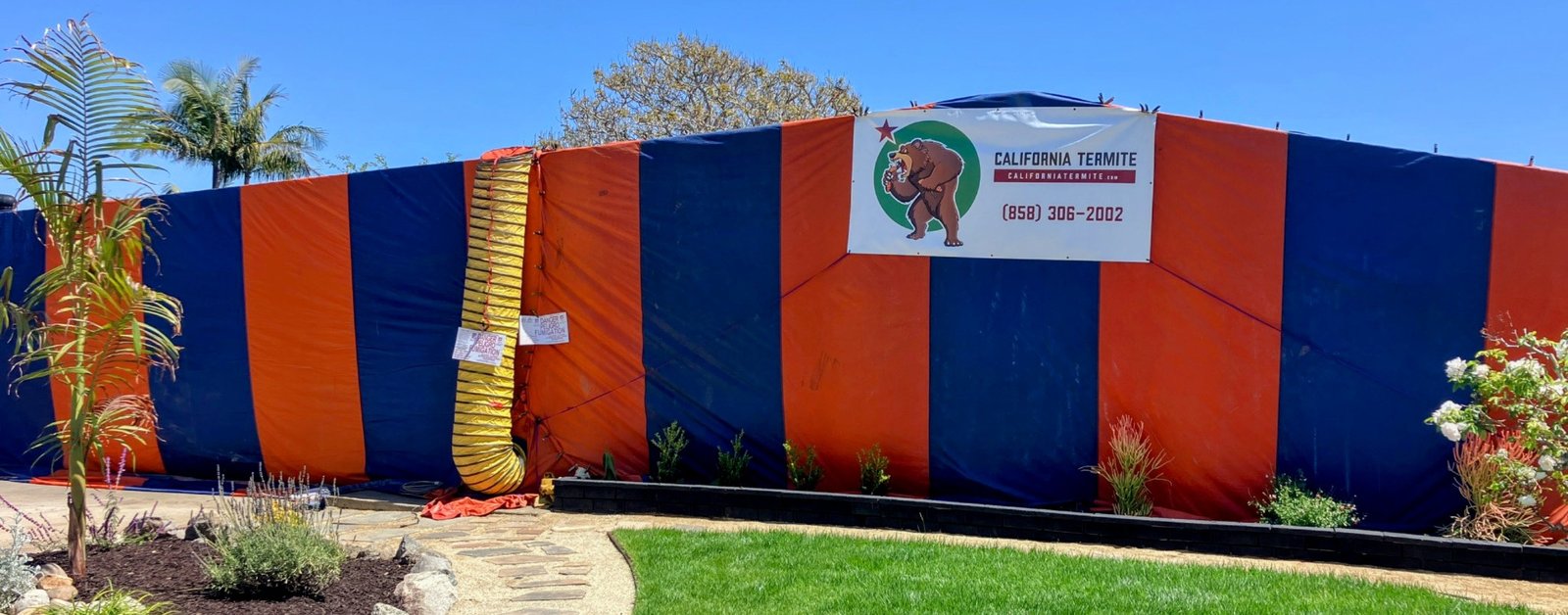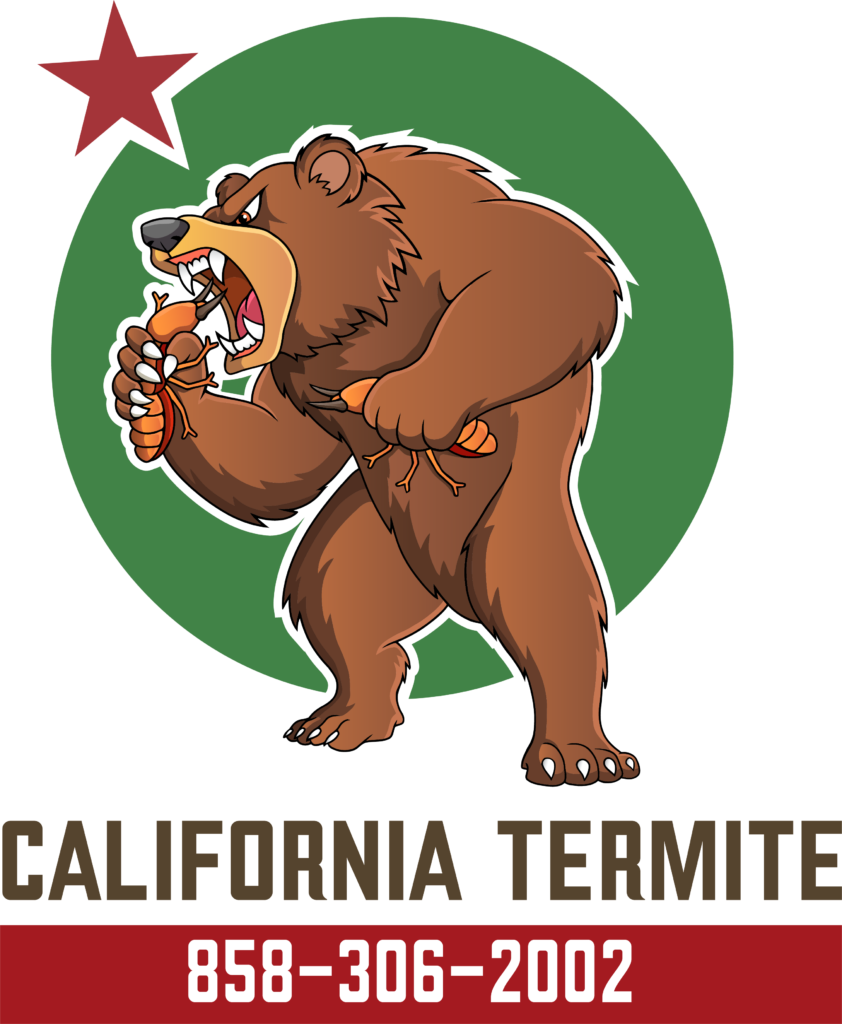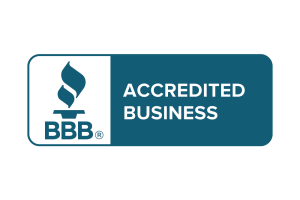License No. PR9657
Termite Fumigation Preparation Guide
 Everything You Need to Know about Tenting Your Home
Everything You Need to Know about Tenting Your Home
Fumigation requires coordination between you, tenants (if applicable), neighbors, the termite company, and the fumigators. Each party plays a vital role in ensuring a smooth process and effective treatment.
Roles and Responsibilities
Termite Company
- Conduct initial and follow-up inspections.
- Provide fumigation bags and detailed instructions.
- Obtain all necessary waivers.
- Mask or clean termite droppings to avoid confusion with new activity in the future.
- Fulfill the warranty and provide post-fumigation support.
Fumigators
- Tent the property, release and circulate the gas, and secure the site.
- Open the tent, ventilate the house, and measure air quality to confirm safety.
- Coordinate with the utility company to shut off natural gas before fumigation.
- Repeat the process if the tent fails due to weather or other issues.
Preparation Checklist
Food and Ingestibles
- Double-bag all ingestible items not factory-sealed, including food in refrigerators or freezers, using the provided fumigation bags. It’s not necessary to bag bottled water, lotions, deodorant, soap or shampoo.
Plants and Soil
- Trim plants and rake back ground cover from the home’s exterior.
- Irrigate planters around the perimeter of your home on tenting day to prevent gas absorption and potential plant damage.
- Remove all indoor plants.
Accessibility
- Unlock gates for utility and fumigator access (e.g., gas meter).
- Ensure all rooms, closets, attics, crawl spaces, garages, and safes are accessible.
- Fumigation could be postponed if any rooms are inaccessible.
Utilities and Safety
- Schedule natural gas restoration for the day the tent comes down.
- Keep electricity on for ventilation fans.
- Remove pets, especially cats (specific waivers may apply).
Neighbors and Property
- Obtain a signed release if the fumigation tent will extend onto a neighbor’s property.
Weather
- Fumigation may be postponed for lightning or heavy rain, especially if challenging roof conditions exist (steep pitches, slick surfaces).
Swallows
- If there are swallows in a nest attached to a home that is to be fumigated, the fumigator cannot proceed.
Tile Roofs and Solar Panels
- Tile insurance is recommended to cover any damage caused by fumigators. Without it, repairs are your responsibility.
- Solar panels and satellite dishes won’t be damaged and generally do not interfere with fumigation.
During Fumigation
- Vacate the property for at least two nights (three nights for weekend fumigations).
- The home will be enclosed in a tent with warning signs posted.
- Burglar alarms can be activated during the fumigation, after the crew leaves the property. It is advisable to inform your local police department that your home will be vacant during the fumigation process.
After Fumigation
Re-entry and Cleanup
- No need to wash clothing, bedding, or dishes, as the gas leaves no residue.
- Trash odors may be circulated inside your household if trash cans are left inside the garage.
Droppings and Evidence
- Termite droppings in attics, crawl spaces, or garages should be masked or cleaned by your termite company. Old evidence can lead to misinterpretations of new activity later.
Key Considerations
Gas and Chemicals
- The gas used (typically Vikane) is odorless, colorless, non-flammable, and leaves no residue.
- Chloropicrin (tear gas) is used as a warning agent.
Effectiveness
- Drywood termites: Fumigation kills termites but not eggs. Offspring cannot survive without adults.
- Subterranean termites: Only termites inside the home are affected. Soil treatments are required to eliminate the nest.
- Other pests: Effective for wood-boring beetles and bed bugs but requires higher gas concentrations. Other insects, like cockroaches, require subsequent pesticide treatments because their eggs are unaffected by the fumigant.
Rodents
- Fumigation is not recommended for rodent issues, because decomposing rodents can create odor issues, especially if they are located in inaccessible areas of your home.
Post-Fumigation Tag
A white tag (approx. 3″ x 5″) will be placed near the attic entrance or garage, noting the date of fumigation for future reference.
Expected Results
- Successful fumigation should prevent termite activity for at least three years.
- Fresh droppings are a sign of new activity, particularly in areas where evidence was cleaned or masked. If fresh droppings appear, the fumigation might have failed. If that’s the case, the fumigator will re-fumigate.
By following this guide, you can ensure a safe and efficient fumigation process.


